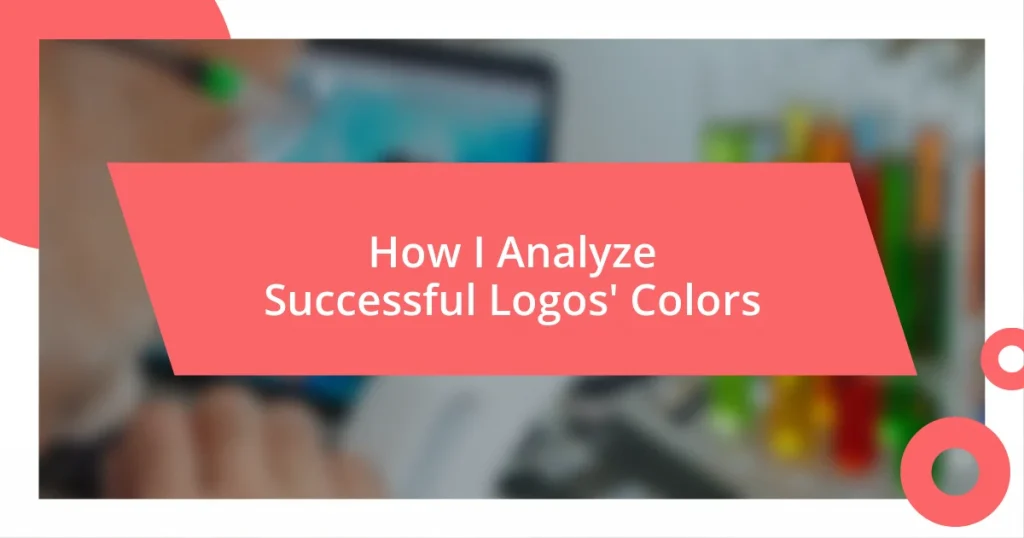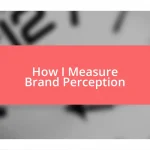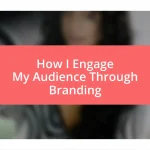Key takeaways:
- Color psychology significantly influences emotions and branding; specific colors can evoke distinct feelings and behaviors, impacting consumer perception and engagement.
- Effective brand color schemes are tailored to target audiences, aligned with brand values and industry trends, and can create emotional resonance.
- Testing colors in context and maintaining color consistency across platforms are crucial for cohesive brand identity, as they directly affect consumer recognition and emotional responses.
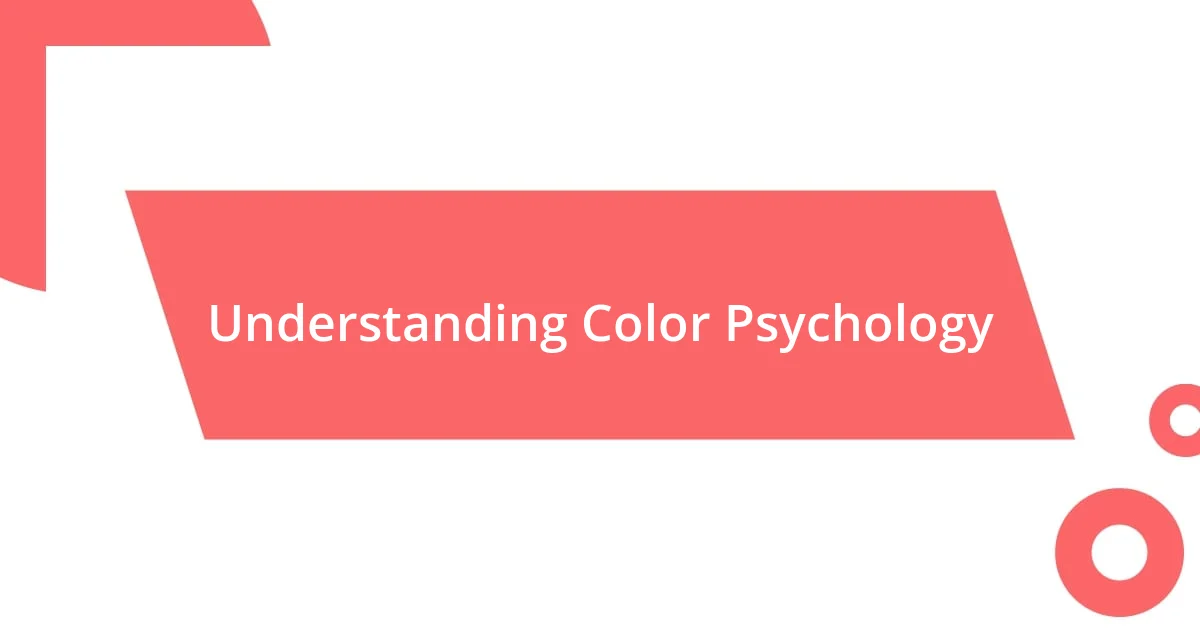
Understanding Color Psychology
Color psychology is a fascinating field that illuminates how colors can evoke emotions and influence behavior. For instance, I have noticed how bright yellow can create feelings of happiness and warmth. Have you ever walked into a room painted in vibrant yellow and felt an immediate lift in mood? It’s remarkable how something as simple as color can have such a profound impact.
When I analyze logos, I pay close attention to the emotional response they generate based on their color choices. For example, the deep blue used in many financial institutions conveys trust and stability. I remember discussing a banking logo with a friend who immediately felt more secure just by seeing the color. It’s interesting how our instincts can be shaped so subtly by colors.
Beyond personal experiences, understanding color psychology helps refine branding strategies. Red can incite a sense of urgency, which explains why it often appears in clearance sales. Have you noticed this in action? Personally, I find it intriguing how a single hue can drive consumer behavior, and it reinforces the importance of thoughtful color selection in logo design.
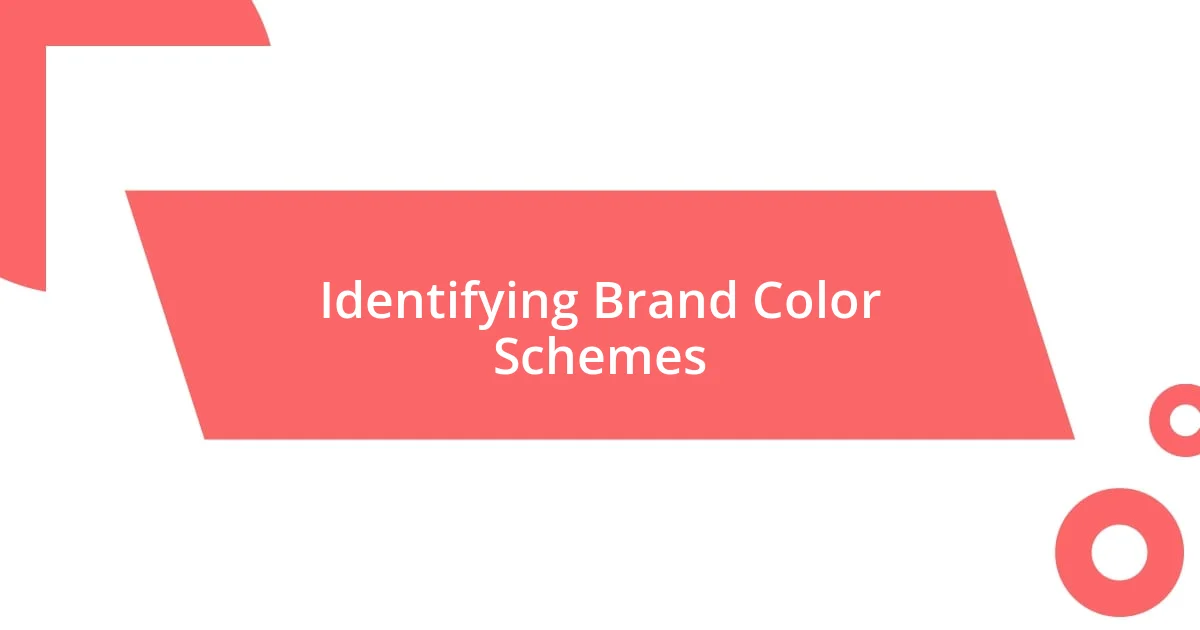
Identifying Brand Color Schemes
Identifying a brand’s color scheme involves careful consideration of its core values, target audience, and the emotions they wish to evoke. When I first ventured into logo design, I encountered a local café that used a forest green color palette. This decision not only reflected the café’s commitment to organic products but also made customers feel a sense of calm and connection to nature. Observing this, I learned that the right color scheme can powerfully resonate with a brand’s message.
Here are some key factors to consider when identifying effective brand color schemes:
- Target Audience: Different demographics respond uniquely to colors. Understanding who they are can guide color choices.
- Brand Values: Align colors with the brand’s mission and values—this coherence fosters authenticity.
- Industry Trends: Analyze competitors to identify common color themes and discover opportunities to stand out.
- Cultural Associations: Remember that colors have different meanings across cultures, so context is essential.
- Emotional Resonance: Select colors that evoke the desired emotional response, whether it’s excitement, trust, or tranquility.
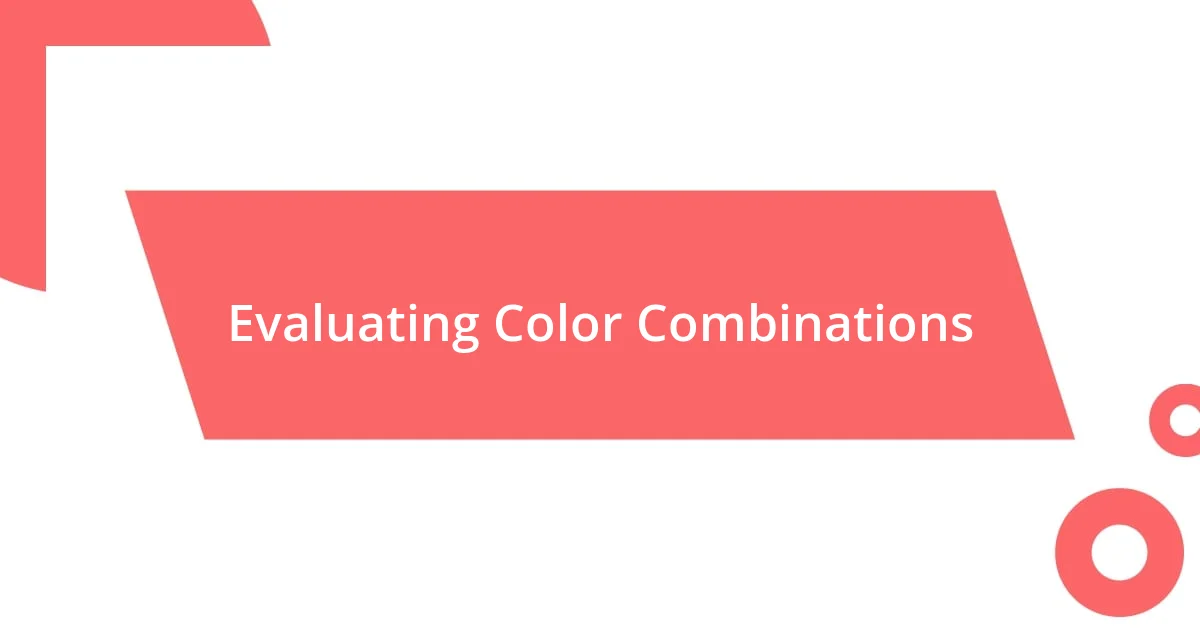
Evaluating Color Combinations
Evaluating color combinations in logos is a meticulous process that greatly influences brand perception. I’ve found that complementary colors—those opposite each other on the color wheel—often create a striking visual impact. For example, when a company pairs blue with orange, it achieves a dynamic balance that captures attention. This combination can evoke excitement while still appearing trustworthy. Have you ever noticed how certain brands utilize this method effectively?
When choosing colors, I always consider how they work together to create harmony or tension. For instance, using a monochromatic scheme—variations of the same color—can evoke sophistication and unity. I recall working with a client who loved deep purple for their beauty brand. We adjusted the shades for different elements—lighter for backgrounds and darker for typography—and the result was a cohesive and elegant look that truly resonated with customers. This experience reinforced my belief in the power of thoughtful color combination.
Ultimately, achieving the right color combination requires testing and iterations. I often conduct A/B testing to see how different palettes resonate with the audience. Once, I rearranged color schemes in an online ad, and the shift from a muted palette to vibrant colors almost doubled the engagement rates. This trial-and-error approach is invaluable in refining the ultimate design and truly understanding which combinations ignite the desired response.
| Color Combination | Emotional Response |
|---|---|
| Blue & Orange | Trust and Excitement |
| Monochromatic Purple | Elegance and Unity |
| Muted vs. Vibrant | Calm vs. Excitement |
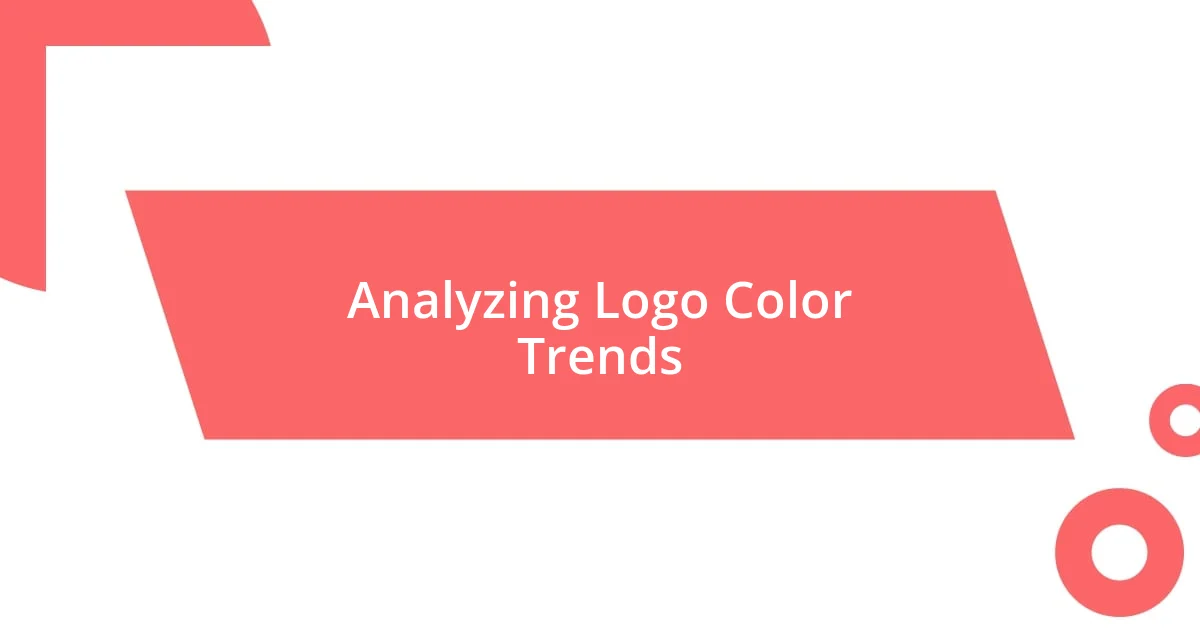
Analyzing Logo Color Trends
Exploring logo color trends is like peeking into the collective psyche of society. I’ve noticed that certain colors surge in popularity at different times, often influenced by cultural or social movements. For instance, during eco-conscious campaigns, green hues tend to dominate as brands strive to connect with environmentally-aware consumers. Isn’t it fascinating how the world around us can dictate visual trends in design?
When analyzing current color trends, I pay attention to emerging palettes that resonate with younger generations. Recently, I collaborated with a startup targeting Gen Z, and we leaned into vibrant, bold colors—think electric blue and neon pink. These choices not only captured their attention but also seemed to reflect their energetic lifestyle and desire for self-expression. Have you ever wondered why some brands seem to effortlessly attract the youth?
It’s crucial to keep an eye on how colors evolve over time within industries. I remember a project where we initially chose a bright orange for a tech company, only to find that pastels were making a comeback. We pivoted to a soft mint green, aligning with the trend while maintaining a fresh identity. Tracking these shifts helps me forecast which color choices will resonate in the future while ensuring that my designs remain relevant and engaging. What trends have you observed lately?
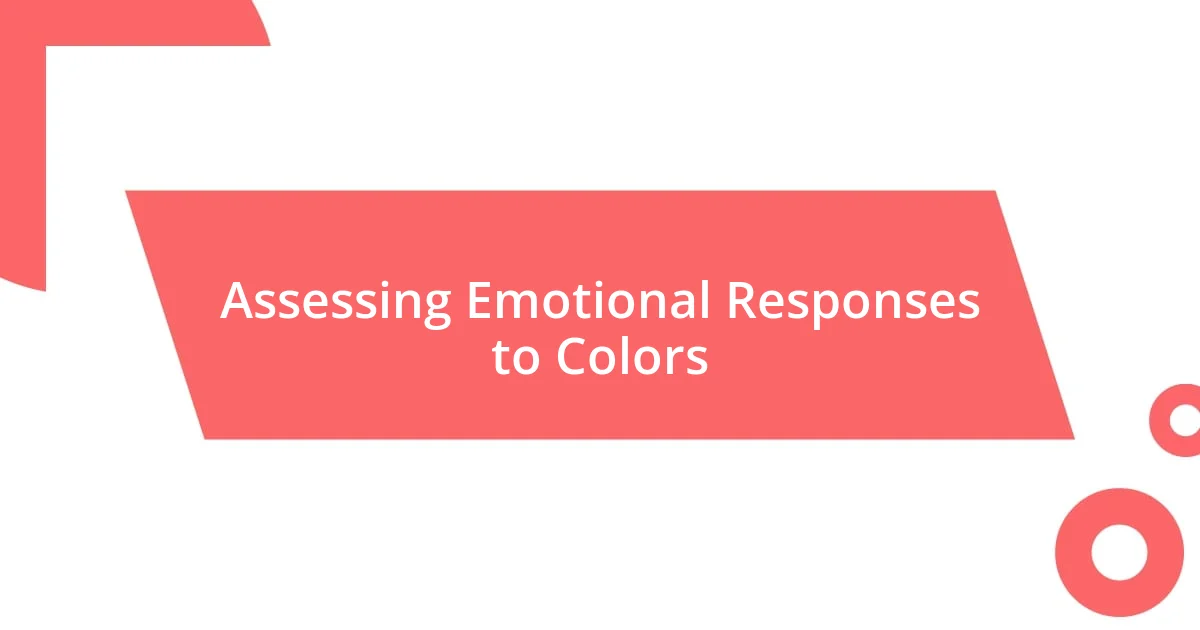
Assessing Emotional Responses to Colors
When I assess emotional responses to colors, I often reflect on how different shades can trigger specific feelings. For example, I once worked on a campaign for a health and wellness brand that used soft blues and greens, which elicited feelings of calm and tranquility. The feedback from consumers highlighted how these colors made them feel more relaxed when interacting with the brand. Isn’t it interesting how such simple choices can significantly influence our emotional state?
Color psychology plays a pivotal role in branding, and I often harness this to create a desired emotional connection. I remember a project for a children’s toy company where we employed bright yellow and cheerful red. The vibrant colors sparked joy and excitement in both kids and parents, aligning perfectly with the brand’s playful spirit. Have you ever thought about how a simple color choice can enhance a brand’s personality?
In my experience, it’s essential to dive deeper into the audience’s emotional responses during the design process. Once, I facilitated a workshop with a focus group, showcasing various colors with their corresponding emotional cues. To my surprise, the participants associated certain greens not just with nature, but with feelings of renewal and hope. Engaging directly with the audience gave me valuable insights that refined my design decisions. Isn’t it eye-opening how much a conversation about color can reveal about our perceptions?
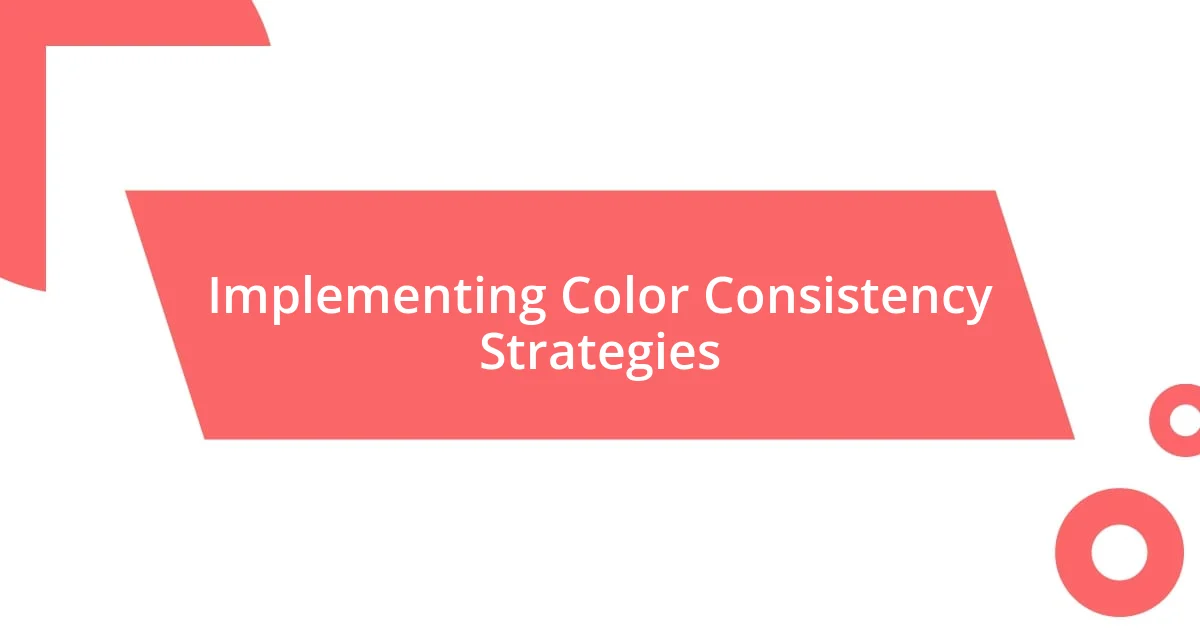
Implementing Color Consistency Strategies
Implementing color consistency strategies is vital for creating a unified brand image. I recall working with a beverage company that used distinct shades of blue across all their marketing materials. It not only enhanced brand recognition but also helped consumers associate their product with a sense of refreshment and reliability. Have you ever picked up a product simply because its colors felt familiar and inviting?
Establishing a color palette involves more than just selecting attractive shades; it’s about maintaining consistency across every platform. When I redesigned a client’s logo, I developed a style guide that outlined color codes and usage examples for both print and digital media. This guide became my go-to reference and ensured that every piece of content reflected the brand’s identity cohesively. How often have you encountered brands that veer away from their established color schemes, confusing you as a consumer?
Additionally, I find that regular audits of a brand’s visual communication can help ensure ongoing consistency. There was a notable instance when a well-known retailer shifted from bold, contrasting colors to softer, muted tones without any explanation. Their loyal customers noticed the change, and it sparked discussions about brand identity. Conducting periodic reviews has helped me fine-tune color applications and maintain that essential visual harmony. Isn’t it amazing how a little oversight in color usage can impact a brand’s perception?
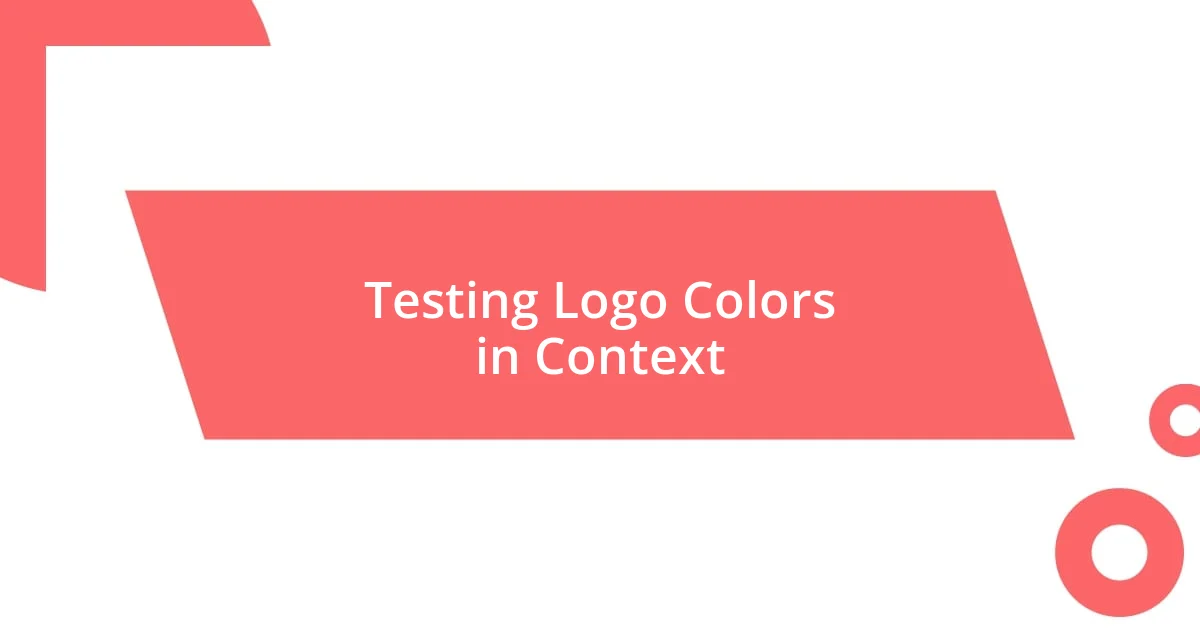
Testing Logo Colors in Context
Testing logo colors in context is a crucial step I prioritize in my design process. I remember a time when I visually tested different logo colors against various backgrounds. For a tech startup, we initially chose a vibrant orange, but when placed against a bold black backdrop, the color felt aggressive rather than inviting. This exercise taught me that context can completely transform the emotional reception of a color. Have you ever seen a color in a product and thought, “Wow, that doesn’t feel quite right”?
In another project for an organic food brand, I set up mock-ups featuring the logo in real-world settings, like packaging and promotional materials. I quickly learned that earthy greens worked beautifully in a grocery store environment, but when viewed online, they lost some of their appeal. This contrast highlighted the importance of evaluating logo colors in their intended usage. Don’t you find it fascinating how a color can evoke different feelings depending on its surroundings?
I also like to conduct A/B testing with real consumers to gather authentic feedback on color choices. For instance, I tested two variations of a logo for a fashion brand—one in deep navy and another in a soft pastel. The results were eye-opening: the navy logo resonated more with a mature audience, while the pastel appealed to a younger demographic. Engaging the target audience not only validates our decisions but also deepens our understanding of the psychological impact of colors in various contexts. Isn’t it incredible how directly involving people can guide our design strategies?










